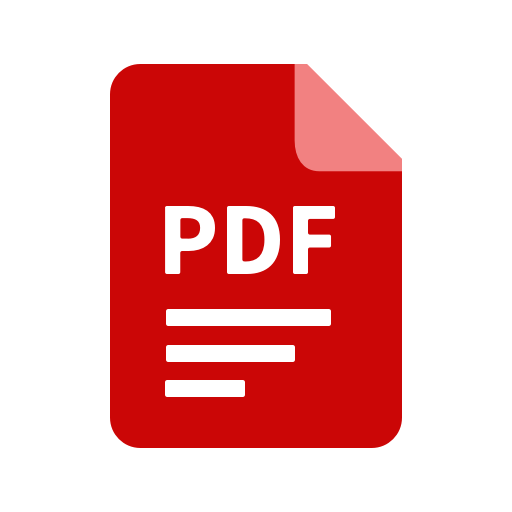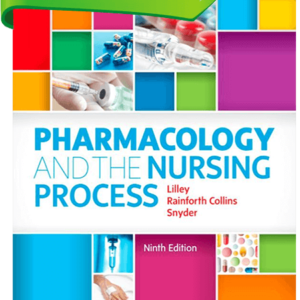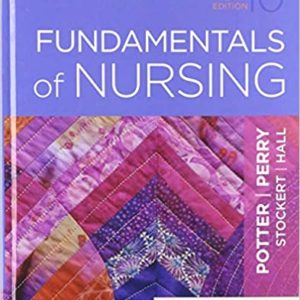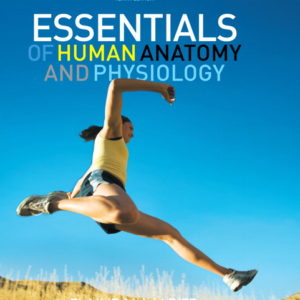NCLEX Practice Questions And Answers. Latest , A Grade
$15
Description
NCLEX Practice Questions And Answers. Latest , A Grade
Question 1:
(see full question)
When performing an abdominal assessment, the nurse uses a
different order of techniques than with other systems. Which of the
following represents this order
You selected: Inspection, auscultation, percussion, palpation
Correct
Explanation: In an abdominal assessment, start with inspection, then
auscultation, percussion, and palpation. This is the preferred
approach because palpation and percussion before auscultation
may alter the sounds heard. (less)
Reference: Taylor, C., et al. Fundamentals of Nursing, 8th ed. Philadelphia:
Wolters Kluwer Health/Lippincott Williams & Wilkins; 2015, Chapter
25: Health Assessment, p. 658.
Chapter 25: Health Assessment – Page 658
Question 2:
(see full question)
The nurse in post-anesthesia recovery (PAR) is caring for a 27-
year-old client following an appendectomy. Twenty minutes after
receiving 4 mg of intravenous (IV) morphine for abdominal pain, the
client continues to report abdominal discomfort and requests more
morphine. Which action by the nurse is best?
You selected: Observe the abdomen for distention and rigidity.
Correct
Explanation: Continued abdominal pain after administration of IV morphine is an
unexpected occurrence and requires further assessment by the
nurse to rule out peritonitis or internal bleeding by observing the
abdomen for distention and rigidity. Administration of more
morphine could mask the cause of the abdominal pain and delay
diagnosis of a possible postoperative complication. Applying heat to
the abdomen would increase blood flow to the area and potentially
increase pain or internal bleeding. Positioning the client in a kneesflexed
position may relieve the discomfort, but an assessment is
needed before any intervention is implemented. (less)
Reference: Taylor, C. R. Fundamentals of Nursing, 8th ed. Philadelphia:
Wolters Kluwer Health/Lippincott Williams & Wilkins, 2015, Chapter
25: Health Assessment, p. 658.
Chapter 25: Health Assessment – Page 658
Question 3:
(see full question)
The nurse will obtain the greatest amount of information about the
thyroid gland by using which technique of assessment?
You selected: Palpation
Correct
Explanation: The thyroid gland is assessed by palpation, although it is not
normally palpable in some patients.
Reference: Taylor, C., et al. Fundamentals of Nursing, 8th ed. Philadelphia:
Wolters Kluwer Health/Lippincott Williams & Wilkins; 2015, Chapter
25: Health Assessment, pp. 647-648.
Chapter 25: Health Assessment – Page 647
Question 4:
(see full question)
The nurse is asking admission interview questions and the client
has explained the reason for seeking care. Which of the following is
the most appropriate way to document the response?
You selected: Client describes shortness of breath and increased sputum
production.
Incorrect
Correct response: Client states, “I feel winded all of the time and yesterday I started
spitting up a lot of phlegm.”
Explanation: The client’s reason for seeking care should always be stated in the
client’s own words.
Reference: Taylor, C., et al. Fundamentals of Nursing, 8th ed. Philadelphia:
Wolters Kluwer Health/Lippincott Williams & Wilkins; 2015, Chapter
25: Health Assessment, p. 628.
Chapter 25: Health Assessment – Page 628
Question 5:
(see full question)
The nurse in the emergency department observes a client
experiencing a generalized tonic–clonic seizure. What is the priority
intervention for the nurse to take?
You selected: Assess and maintain the client’s airway.
Correct
Explanation: Risk for aspiration is a concern during a seizure because the client
will have copious oral secretions that will need to be suctioned and
allowed to drain out of the mouth. The nurse should assess the
client’s airway and maintain it by placing the client in a side-lying
position, which will allow the oral secretions to drain from his mouth
and not accumulate in his throat and compromise the airway. It is
contraindicated to place anything in the mouth of a person who is
actively convulsing. Reorienting the client and documenting the
seizure are important actions after the postictal phase, but client
safety is the priority intervention during a seizure. (less)
Reference: Taylor, C. R. Fundamentals of Nursing, 8th ed. Philadelphia:
Wolters Kluwer Health/Lippincott Williams & Wilkins, 2015, Chapter
25: Health Assessment, p. 625.
Chapter 25: Health Assessment – Page 625
Question 6:
(see full question)
The nurse is caring for a client who just informed her that he
noticed some blood in the toilet after a bowel movement. The nurse
assesses the client’s anal area and notes a deep linear separation
in the skin that extends into the dermis. The nurse recognizes that
this skin lesion is characteristic of which of the following?
You selected: Erosion
Incorrect
Correct response: Fissure
Explanation: A fissure is characterized as a deep linear separation in the skin
that extends into the dermis. Erosion is a loss of superficial
epidermis; it is moist and may bleed. An ulcer appears as a loss of
epidermis and dermis and may bleed. Crusts are dried residue
(serum, pus, or blood) on the skin. (less)
Reference: Taylor, C. R. Fundamentals of Nursing, 8th ed. Philadelphia:
Wolters Kluwer Health/Lippincott Williams & Wilkins, 2015, Chapter
25: Health Assessment, p. 641, Table 25-4.
Chapter 25: Health Assessment – Page 641
Reference: Taylor, C. R. Fundamentals of Nursing, 8th ed. Philadelphia:
Wolters Kluwer Health/Lippincott Williams & Wilkins, 2015, Chapter
25: Health Assessment, p. 654, Box 25-5.
Chapter 25: Health Assessment – Page 654
Question 7:
(see full question)
The nurse is auscultating an apical pulse on a 39-year-old
client admitted with pneumonia. In counting the apical pulse,
the nurse recognizes which characteristic about heart sounds?
You selected: Each lub-dub is one beat.
Correct
Explanation: Each lub (the first heart sound) represents the closure of the
mitral and tricuspid valves during systole, and the dub (the
second heart sound) represents the closure of the aortic and
pulmonic valves during diastole. Together the lub-dub sounds
are counted as one beat. The two sounds occur within 1
second or less of each other, depending on the heart rate.
(less)
Question 8:
(see full question)
Which assessment measure would the nurse use to assess the
location, shape, size, and density of a tumor?
You selected: Percussion
Correct
Explanation: Percussion is the act of striking one object against another to
produce sound. The fingertips are used to tap the body over body
tissues to produce vibrations and sound waves. The location,
shape, size, and density of organs or tumors are assessed with this
method. Observation is visually looking at an object. The
characteristics that can be determined about a tumor by palpation
include shape, size, consistency, surface, mobility, tenderness, and
pulsatile. (less)
Reference: Taylor, C.R. Fundamentals of Nursing, 8th ed., Philadelphia: Wolters
Kluwer Health, 2015, Chapter 25, Health Assessment, p. 635
Question 9:
(see full question)
The nurse is palpating the skin of a 30-year old patient and
documents that when picked up in a fold, the skin fold slowly
returns to normal. What would be the next action of the nurse
based on this finding?
You selected: Assess the patient for dehydration.
Correct
Explanation: Turgor is the fullness or elasticity of the skin. The patient should be
further assessed for signs and symptoms of dehydration because
poor skin turgor is a sign of dehydration. When the patient is
dehydrated, the skin’s elasticity is decreased, and the skin fold
returns slowly. Poor skin turgor is neither a sign of cardiovascular
disease, nor cystic fibrosis. (less)
Reference: Taylor, C.R. Fundamentals of Nursing, 8th ed., Philadelphia: Wolters
Kluwer Health, 2015, Chapter 25, Health Assessment, p. 639
Question 10:
(see full question)
The nurse is using a bed scale to weigh a patient, and the patient
becomes agitated as the sling rises in the air. What would be the
priority nursing intervention in this situation?
You selected: Enlist the help of another nurse to hold the patient steady during
the procedure.
Incorrect
Correct response: Stop lifting the patient and reassess him or her.
Explanation: The nurse should stop lifting the patient and reassure him or her. If
the patient continues to be agitated, the nurse lowers the patient
back to the bed, and reevaluates the necessity of obtaining weight
at that exact time. Continuing to lift the patient may result in injury to
the patient. An order for sedation would only be requested if it was
absolutely necessary to obtain the patient’s weight at this time.
Another nurse holding the patient steady does not address the
patient’s agitation. (less)
Reference: Taylor, C.R. Fundamentals of Nursing, 8th ed., Philadelphia: Wolters
Kluwer Health, 2015, Chapter 25, Health Assessment, p. 674
Question 11:
(see full question)
To obtain subjective data about a newly admitted client’s sleep
pattern, the nurse
You selected: Asks the client what promotes sleep
Correct
Explanation: The assessment of sleep and rest focuses on the client’s normal
sleep patterns, alterations from the normal pattern, and satisfaction
with quality of rest and sleep.
Reference: Taylor, C., et al. Fundamentals of Nursing, 8th ed. Philadelphia:
Wolters Kluwer Health/Lippincott Williams & Wilkins; 2015, Chapter
25: Health Assessment, p. 625.
Chapter 25: Health Assessment – Page 625
Question 12:
(see full question)
A nurse performs an assessment on a client who has been
admitted to a long-term care facility for physical rehabilitation. What
is the term for this type of assessment?
You selected: Comprehensive assessment
Correct
Explanation: A comprehensive assessment with a detailed health history and
complete physical examination are usually conducted when a client
enters a health care setting. An ongoing and focused assessment is
conducted at regular intervals during client care. An emergency
assessment is a rapid, focused assessment conducted to
determine potentially fatal situations. (less)
Reference: Taylor, C., et al. Fundamentals of Nursing, 8th ed. Philadelphia:
Wolters Kluwer Health/Lippincott Williams & Wilkins; 2015, Chapter
25: Health Assessment, p. 626.
Chapter 25: Health Assessment – Page 626
Question 13:
(see full question)
A 57-year-old male client is admitted to the medical unit with a 3-
day history of sharp, nonradiating epigastric pain and vomiting. He
denies seeing blood in his stool. When assessing this client’s
abdomen, what assessment technique would the nurse perform
last?
You selected: Palpation
Correct
Explanation: The sequence of techniques used to assess the abdomen is
inspection, auscultation, percussion, and palpation. Percussion and
palpation are done after auscultation because they stimulate bowel
sounds. (less)
Reference: Taylor, C. R. Fundamentals of Nursing, 8th ed. Philadelphia:
Wolters Kluwer Health/Lippincott Williams & Wilkins, 2015, Chapter
25: Health Assessment, p. 659.
Chapter 25: Health Assessment – Page 659
Question 14:
(see full question)
You are assessing a patient’s thorax and lungs. Which of the
following findings would indicate the need for further assessment?
You selected: Auscultation of short, high-pitched popping sounds during
inspiration
Correct
Explanation: Crackles (short, high-pitched popping sounds) may indicate
disease, such as pneumonia or heart failure.
Reference: Taylor, C., et al. Fundamentals of Nursing, 8th ed. Philadelphia:
Wolters Kluwer Health/Lippincott Williams & Wilkins; 2015, Chapter
25: Health Assessment, p. 648.
Chapter 25: Health Assessment – Page 648
Question 15:
(see full question)
A nurse assesses a patient for blood pressure. Which of the
following techniques would be used for this assessment?
You selected: Inspection
Incorrect
Correct response: Auscultation
Explanation: Auscultation is the act of listening with a stethoscope to sounds
produced within the body. This technique is used to listen for blood
pressure, heart sounds, lung sounds, and bowel sounds. Inspection
is the process of performing deliberate, purposeful observations in
a systematic manner. It uses the senses of smell, hearing, and
sight. The hands and fingers are sensitive tools of palpation and
can assess temperature, turgor, texture, moisture, pulsations,
vibrations, shape and masses, and organs. Percussion is used to
assess the location, shape, and size of organs, and the density of
other underlying structures or tissues. (less)
Reference: Taylor, C., et al. Fundamentals of Nursing, 8th ed. Philadelphia:
Wolters Kluwer Health/Lippincott Williams & Wilkins; 2015, Chapter
25: Health Assessment, p. 632.
Chapter 25: Health Assessment – Page 632
Question 16:
(see full question)
The charge nurse is observing a new nurse perform an assessment
of a client’s head and neck. Which of the following actions, if
observed, would require the charge nurse to intervene?
You selected: Palpation of both carotid arteries at the same time
Correct
Explanation: Palpation of both arteries at once can obstruct blood flow to the
brain.
Reference: Taylor, C., et al. Fundamentals of Nursing, 8th ed. Philadelphia:
Wolters Kluwer Health/Lippincott Williams & Wilkins; 2015, Chapter
25: Health Assessment, p. 655.
Chapter 25: Health Assessment – Page 655
Question 17:
(see full question)
The nurse is caring for an 88-year-old male admitted 2 days ago for
dehydration. The nurse brings the client his breakfast tray and
notes that the client appears to be having difficulty understanding
what she is saying to him today. Which nursing action is most
appropriate?
You selected: Check the client’s ear canals for cerumen.
Correct
Explanation: Ear wax (cerumen) becomes drier in the elderly and can block the
ear canal and cause decreased hearing. Asking the client if he has
earplugs in his ears is not appropriate. Using facial expressions and
sign language is appropriate in communicating with the hard of
hearing, but this client’s hearing loss was acute and requires further
assessment. When speaking to the elderly who are hearingimpaired,
one needs to use low tones to facilitate communication;
high-frequency tones are problematic for the elderly. (less)
Reference: Taylor, C. R. Fundamentals of Nursing, 8th ed. Philadelphia:
Wolters Kluwer Health/Lippincott Williams & Wilkins, 2015, Chapter
25: Health Assessment, p. 646.
Chapter 25: Health Assessment – Page 646
Question 18:
(see full question)
The acute care nurse is assessing a newly admitted client’s
abdomen. Which of the following findings would indicate the need
to contact the primary care provider?
You selected: Auscultation of a bruit
Correct
Explanation: A bruit on auscultation suggests an aneurysm or arterial stenosis.
Reference: Taylor, C., et al. Fundamentals of Nursing, 8th ed. Philadelphia:
Wolters Kluwer Health/Lippincott Williams & Wilkins; 2015, Chapter
25: Health Assessment, p. 654.
Chapter 25: Health Assessment – Page 654
Question 19:
(see full question)
A nurse who works on a day-surgery unit conducts a thorough,
head to toe assessment of each client prior to the client’s scheduled
surgery. The nurse would document an unexpected finding if unable
to palpate a client’s …
You selected: peripheral pulses.
Correct
Explanation: Nonpalpable peripheral pulses are an unexpected finding, which
warrants further assessment and follow-up. The liver, lymph nodes,
and thyroid are not normally palpable in healthy individuals. (less)
Reference: Taylor, C., et al. Fundamentals of Nursing, 8th ed. Philadelphia:
Wolters Kluwer Health/Lippincott Williams & Wilkins; 2015, Chapter
25: Health Assessment, pp. 652-655.
Chapter 25: Health Assessment – Page 652
Question 20:
(see full question)
Upon auscultation of a client’s lung fields, the nurse hears a
continuous high-pitched sound on expiration. These are
characteristics of which adventitious breath sound?
You selected: Wheezes
Correct
Explanation: Wheezes are continuous sounds originating in small air passages
that are narrowed by secretions, swelling, or tumors; the wheezes
may be inspiratory or expiratory. A pleural friction rub is a grating
sound caused by an inflamed pleura rubbing against the chest wall.
Crackles are fine to coarse crackling sounds made as air moves
through wet secretions. Stertorous breathing describes noisy,
strenuous respirations. (less)
Reference: Taylor, C., et al. Fundamentals of Nursing, 8th ed. Philadelphia:
Wolters Kluwer Health/Lippincott Williams & Wilkins; 2015, Chapter
25: Health Assessment, p. 652.
Chapter 25: Health Assessment – Page 652
Question 18:
(see full question)
The acute care nurse is assessing a newly admitted client’s
abdomen. Which of the following findings would indicate the need
to contact the primary care provider?
You selected: Auscultation of a bruit
Correct
Explanation: A bruit on auscultation suggests an aneurysm or arterial stenosis.
Reference: Taylor, C., et al. Fundamentals of Nursing, 8th ed. Philadelphia:
Wolters Kluwer Health/Lippincott Williams & Wilkins; 2015, Chapter
25: Health Assessment, p. 654.
Chapter 25: Health Assessment – Page 654
Question 19:
(see full question)
A nurse who works on a day-surgery unit conducts a thorough,
head to toe assessment of each client prior to the client’s scheduled
surgery. The nurse would document an unexpected finding if unable
to palpate a client’s …
You selected: peripheral pulses.
Correct
Explanation: Nonpalpable peripheral pulses are an unexpected finding, which
warrants further assessment and follow-up. The liver, lymph nodes,
and thyroid are not normally palpable in healthy individuals. (less)
Reference: Taylor, C., et al. Fundamentals of Nursing, 8th ed. Philadelphia:
Wolters Kluwer Health/Lippincott Williams & Wilkins; 2015, Chapter
25: Health Assessment, pp. 652-655.
Chapter 25: Health Assessment – Page 652
Question 20:
(see full question)
Upon auscultation of a client’s lung fields, the nurse hears a
continuous high-pitched sound on expiration. These are
characteristics of which adventitious breath sound?
You selected: Wheezes
Correct
Explanation: Wheezes are continuous sounds originating in small air passages
that are narrowed by secretions, swelling, or tumors; the wheezes
may be inspiratory or expiratory. A pleural friction rub is a grating
sound caused by an inflamed pleura rubbing against the chest wall.
Crackles are fine to coarse crackling sounds made as air moves
through wet secretions. Stertorous breathing describes noisy,
strenuous respirations. (less)
Reference: Taylor, C., et al. Fundamentals of Nursing, 8th ed. Philadelphia:
Wolters Kluwer Health/Lippincott Williams & Wilkins; 2015, Chapter
25: Health Assessment, p. 652.
Chapter 25: Health Assessment – Page 652
Answer Key
Question 1:
(see full
question)
The nurse is caring for a client after a stroke that left the client’s right side weaker
than the left. The nurse coordinates the plan of care with the physical therapist. The
nurse’s interventions reflect which one of nursing’s four broad goals?
You
selected:
• To restore health
Correct
Explanation: The four broad aims of nursing practice are to promote health, prevent illness,
restore health, and facilitate coping with death and/or disability. In the example, the
nurse is coordinating care with the other disciplines in an attempt regain some of the
strength in the client’s right side. This is an example of restoring a client’s health.
The nurse is not preventing the stroke or promoting health prior to the stroke or
facilitating coping with the stroke. (less)
Reference: Taylor, C., et al. Fundamentals of Nursing, 8th ed. Philadelphia: Wolters Kluwer
Health/Lippincott Williams & Wilkins, 2015, Chapter 1: Introduction to Nursing, p. 10.
Chapter 1: Introduction to Nursing – Page 10
Question 2:
(see full
question)
A man age 61 years is distraught because he has just learned that his most recent
computed tomography (CT) scan shows that his colon cancer has metastasized to
his lungs. Which of the following nursing aims should the nurse prioritize in the
immediate care of this patient?
You
selected:
Facilitating coping
Correct
Explanation: This patient’s care in the coming weeks or months will likely encompass all of the
four foundational roles of the nurse. However, because the patient has just recently
received bad news and is emotionally distraught, helping the patient cope is an
appropriate priority in his immediate care. (less)
Reference: Taylor, C., et al. Fundamentals of Nursing, 8th ed. Philadelphia: Wolters Kluwer
Health/Lippincott Williams & Wilkins; 2015, p. 13.
Chapter 1: Introduction to Nursing – Page 13
Question 3:
(see full
question)
The nurse working with an LPN understands which of the following about LPNs?
You
selected:
They may work independently.
Incorrect
Correct
response:
They must take a licensure exam.
Explanation: Schools for practical nursing programs are located in varied settings. Most programs
are 1 year in length. Upon completion of the program, graduates can take the
National Council Licensure Examination-Practical Nurse (NCLEX-PN) for licensure
as an LPN. LPNs work under the direction of a physician or RN to give direct care to
clients, focusing on meeting healthcare needs in hospitals, nursing homes, and
home health agencies. (less)
Question 4:
(see full
question)
A group of nursing students has attended a presentation about the National Student
Nurses’ Association (NSNA). Which statement by the group indicates that they have
understood the information presented?
You
selected:
The organization provides programs of current professional interest.
Correct
Explanation: The National Student Nurses’ Association provides programs of current professional
interest. It is not run by a group of registered nurses, but by nursing students
themselves. It is student-funded, not funded by the national government. The
Commission on Collegiate Nursing Education, not the National Student Nurses’
Association, contributes to the improvement of public health. (less)
Reference: Taylor, C., et al. Fundamentals of Nursing, 8th ed. Philadelphia: Wolters Kluwer
Health/Lippincott Williams & Wilkins; 2015, p. 17.
Chapter 1: Introduction to Nursing – Page 17
Question 5:
(see full
question)
Which nursing actions demonstrate the aim of nursing to facilitate coping? (Select all
that apply.)
You
selected:
• Assisting a patient and his/her family to prepare for death
• Teaching a patient and his/her family how to live with diabetes
• Providing counseling for the family of a teenager with an eating disorder
Correct
Explanation: Coping is another important broad aim of nursing. Nurses facilitate client and family
coping with altered function, life crisis, and death. Examples of coping would be
teaching a client and the client’s family about how to live with diabetes. Another
example would be assisting a client and the client’s family to prepare for death. A
third example would be providing counseling for the family of a teenager with an
eating disorder. Changing bandages, starting an IV, or teaching a class on an
expected healthcare issue or need would not be examples of the aim of facilitating
coping with disability or death. (less)
Reference: Taylor, C.R. Fundamentals of Nursing, 8th ed., Philadelphia: Wolters Kluwer Health,
2015, Chapter 1: Introduction to Nursing, p. 13.
Chapter 1: Introduction to Nursing – Page 13
Question 6:
(see full
question)
What was one barrier to the development of the nursing profession in the United
States after the Civil War?
You
selected:
Lack of educational standards
Correct
Explanation: A lack of educational standards was one barrier to the development of the nursing
profession after the Civil War. Other barriers included a male dominance of health
care and the pervading belief that women were dependent on men. The location of
nursing schools, a lack of influence from nursing leaders, and independent nursing
orders were not barriers to the development of the nursing profession after the Civil
War. (less)
Reference: Taylor, C., et al. Fundamentals of Nursing, 8th ed. Philadelphia: Wolters Kluwer
Health/Lippincott Williams & Wilkins; 2015, p. 7.
Chapter 1: Introduction to Nursing – Page 7
Question 7:
(see full
question)
In what time period did nursing care as we now know it begin?
You
selected:
18th to 19th century
Correct
Explanation: From the middle of the 18th century to the 19th century, social reforms changed the
roles of nurses and of women in general. It was during this time that nursing as we
now know it began, based on the beliefs of Florence Nightingale. (less)
Reference: Taylor, C., et al. Fundamentals of Nursing, 8th ed. Philadelphia: Wolters Kluwer
Health/Lippincott Williams & Wilkins; 2015, p. 7.
Chapter 1: Introduction to Nursing – Page 7
Question 8:
(see full
question)
During the Reformation, what factor influenced the decline of nursing?
You
selected:
Women’s subordination to men
Correct
Explanation: Women were viewed as subordinate to men and were expected to remain at home
caring for children; this decreased the number of qualified women practicing nursing.
Reference: Taylor, C., et al. Fundamentals of Nursing, 8th ed. Philadelphia: Wolters Kluwer
Health/Lippincott Williams & Wilkins; 2015, p. 7.
Chapter 1: Introduction to Nursing – Page 7
Question 9:
(see full
question)
Which of the following nursing interventions would be the most appropriate for a new
mother that calls the nursery for help with breastfeeding?
You
selected:
Refer the mother for a home care visit.
Correct
Explanation: It is the role of the nurse to encourage health promotion by providing information and
You must be logged in to post a review.





Reviews
There are no reviews yet.